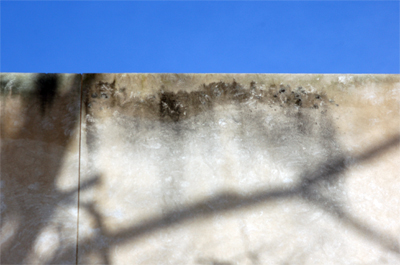
Just after college I lived in LA for a short while where I worked by day as a researcher and graphic artist for a litigation consulting firm run by a couple of lapsed academics. My job was to prepare documentary evidence for trial by milling it through PageMaker; I was also asked to periodically perform the questionable task of driving by the homes of folks in the jury pools of those large corporate spoiler trials for which my employer had been employed, and shooting photos of their homes, vehicles and neighborhoods.
This data was later used by folks who held PhDs to make some estimation of their annual income and political leanings – information that became important during jury selection. I called them my drive-by shootings and enjoyed them at first because, armed with only a
Thomas Guide, it gave me a chance to discover obscure corners of LA, Orange, Ventura and Riverside Counties. I quickly grew uncomfortable with the work as it dawned on me how the information was being used to shape the jury in a way that was not at all representative of the folks who would be impacted by the jury’s decision – a dawning that sufficiently undermined my faith in the American judicial system.
By night I waited tables. This being LA I waited tables alongside a whole slew of folks who worked day jobs as actors, screenwriters and directors and who didn’t yet have enough work to turn those day jobs into regular things.
I worked with one sweetheart of a guy who was both an actor and gay -- and I mention his being gay only because it will provide the necessary context for the rest of this story.
He was convinced that I should become a Las Vegas showgirl – he was resolutely possessed by that certainty – and he never missed an opportunity to tell me so. The first time he mentioned it we were taking a breather between dinner rushes, and I thought he was making some kind of strange joke, so I awkwardly laughed him off.
But he persisted, and would explain to me at every opportunity precisely why. I had the height (I stand 5 foot 12 on a good day), the build, and the hair. I even had, he insisted -- as evidenced when carrying large platters across the sweep of the restaurant -- the carriage required to carry many pounds of costuming up elaborate stairways and across the stage. (You may understand now why his being gay is essential to this story – no straight man could carry forward these exacting observations without landing himself an HR violation.)
I’m a hippie chick by heritage, so the spangles and sequins that he described to me held no appeal – although clearly, as indicated by his enraptured expression when he described them, they did for him. It was the headdresses especially that captivated him – he would describe them by lifting his hands high and delicately gesturing to indicate the sweep, height, heft and curves of the ornament which I was to wear upon my head.
The whole schtick was just
so not me, and didn't fit my model of what I thought a life of accomplishment would mean -- but I didn't stop him, because mostly I loved to listen to him paint that picture, and see myself in a way I never would have imagined. I was captivated by the thought that (at least he thought) I could travel to an entirely different place (different planet, really), as an entirely different person, and pass.
Weren’t bare breasts involved in all this? I’d challenge him while we were grabbing a bite together after our shifts had ended.
Sometimes, he said,
some shows – but you’ll do fine, he’d say, backing up a bit and taking a nice long look. (These were the days before hyper-inflation.) He never gave up on me, and he never failed to sound earnest and wistful and full of regret for the beautiful dreams deferred.
I returned to my home town of Seattle not long after our conversations, where they were laying pipe for the Internet and where I quickly found my niche. The Vegas thing never came up again, I lost touch with my friend, and I didn’t think about it much.
But lately he’s come to mind -- now that I’ve cleared that inevitable hurdle called “approaching middle age” that brings with it laugh lines and extra pounds and would most certainly limit any opportunities that I might once have had to make it in Vegas – and I wonder some about what he might have known about my life that I didn’t know.
What would my life have been if I had pulled back Curtain Number Two instead of Curtain Number Three? Not that I long for sequins and pure camp any more than I ever did (well, maybe I long secretly for a stage beneath my feet – I suspect that's why I blog), but there is that little part of me who knows with too much certainty how the road I’m on has everything to do with the route I chose – and sometimes, don’t you just wonder, what the road would have looked like if you had turned the other way?
(And of course, none of this has anything to do with Vegas. Or showgirls.)

[Photos from a
Lido Cabaret program that my Grandpa Schufman brought home from Paris back in the ‘50s]























































